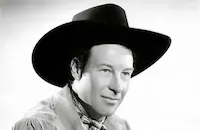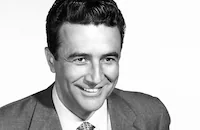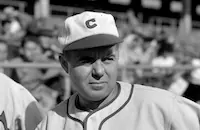The Homesteaders

Brief Synopsis
Cast & Crew
Lewis Collins
Wild Bill Elliott
Robert Lowry
Emmett Lynn
George Wallace
Buzz Henry
Film Details
Technical Specs

Synopsis
In Rockhill, Oregon in 1870, homesteader Mace Corbin receives a telegram informing him that the U.S. Army Corps of Engineers is sending the dynamite he requested to Fort Churchill. Mace immediately informs his best friend and neighbor, Clyde Moss, and his wife Jenny, that he plans to use the dynamite to blast away the rocks impeding farming for all local homesteaders, and that they can also create a pass to a grazing valley for their cattle. Clyde agrees to accompany Mace on the journey to pick up the dynamite and transport it home. Unknown to Mace, however, the destitute Clyde has secretly borrowed money from John Kroger, owner of the local mining company. In exchange for helping steal Mace's dynamite, Kroger has offered Clyde a partnership in his mine. When Mace and Clyde receive the dynamite at Ft. Churchill, they are surprised to learn from Col. Jason Peterson that the batch is dangerously unstable. As Clyde insists they will be able to transport the dynamite safely, Peterson introduces them to a group of eighteen imprisoned soldiers soon to be discharged who can work as their crew. Peterson assures a reticent Mace that the prisoners are good men who merely made mistakes. The former soldiers, including Meade, Charlie, Van, Slim, Hector and the elderly Grimer, reluctantly agree to Mace's rules against smoking and drinking. However, when Meade discovers that the dynamite is unstable, he quits and tosses a stick of the explosive at Mace. Although the dynamite does not explode, Mace attacks Meade to teach him a lesson. Grimer, who seeks a new start in Rockhill, convinces Meade and the rest of the men to stick with the job. After departing from the fort, the wagon train encounters a destroyed wagon and the remains of its murdered occupants. When a drunken Slim later spits a pebble at a horse and causes it to shy, Mace reprimands him by taking his bullets and firing him, despite protests from the other men that Slim will not be safe alone in Indian territory. As the wagon train continues, Meade grows resentful because of Mace's rules and spreads dissent among the men. Farther along their trail, meanwhile, Kroger and his foreman, Jake Williams, are camped and planning their attack on the wagon train. One day, Meade incites three men to mutiny, and when Grimer attempts to intervene, Meade shoots him. Mace then kills Meade and the three other men surrender. Grimer's shoulder wound is treated and as the remaining mutineers are repentant, Mace allows them to remain on the job. Farther along the trail, the wagon train is forced to fend off an Indian attack by circling the wagons and engaging in a gun battle. One man is wounded and when a wagon hit by a flaming arrow explodes, the tribe flees. That night, Mace suggests that Clyde and he join their ranches in a full partnership, but Clyde asks for time to think about it. Mace continues by expressing his distrust of Kroger, who once offered to loan him money. He then explains that he rejected Kroger's offer because of Kroger's reputation for stealing homesteaders' property, and he now worries that Kroger might force them out if he were to obtain their dynamite for his mining operation. Shortly afterward, Mace notices smoke from a nearby campsite, unaware that it belongs to Kroger. Clyde suggests that Mace retire for the night while he orders the guards to double up. After doing so, however, Clyde rides to Kroger's campsite and breaks off the deal out of loyalty to Mace. Kroger pretends to agree, and the next morning, Clyde confesses to Mace. Disappointed by his friend's duplicity, Mace demands that Clyde leave, then reinforces their guard. Before Clyde can depart, however, Kroger and his gang attack the wagon train. Clyde kills Kroger during the gunfight, after which the rest of the gang flees. Mace orders the wagon train to continue, but when he sees his friend riding away alone, he goes after him and insists that he rejoin the wagon train and that they head for home together.

Director
Lewis Collins
Cast

Wild Bill Elliott
Robert Lowry
Emmett Lynn
George Wallace
Buzz Henry
Stanley Price

Rick Vallin
William Fawcett
James Seay
Tom Monroe
Barbara Allen [wooddell]

Ray Walker
Crew
Mary Chaffee
Vincent M. Fennelly
Sam Fields
Raoul Kraushaar
Ray Mercer
Ernest Miller
David Milton
Theodore F. Offenbecker
Stanley Price
Milton Raison
Melville Shyer
Sid Theil
Frank Webster

Film Details
Technical Specs

Articles
The Homesteaders
By Richard Harland Smith

The Homesteaders
Quotes
Trivia
Notes
The film opens with the following written foreword: "When the Homesteaders settled in Oregon, they found a beautiful, lush country-a country that held promise for all. But clearing the land was a challenge, for the thick tree growth and the huge rocks that peppered the soil kept the homesteaders from plowing and herding successfully. The problem was particularly acute in the year 1870, when the country was still recovering from the effects of the Civil War." According to copyright records and reviews, The Homesteaders was released in sepia, but the viewed print was black and white.














